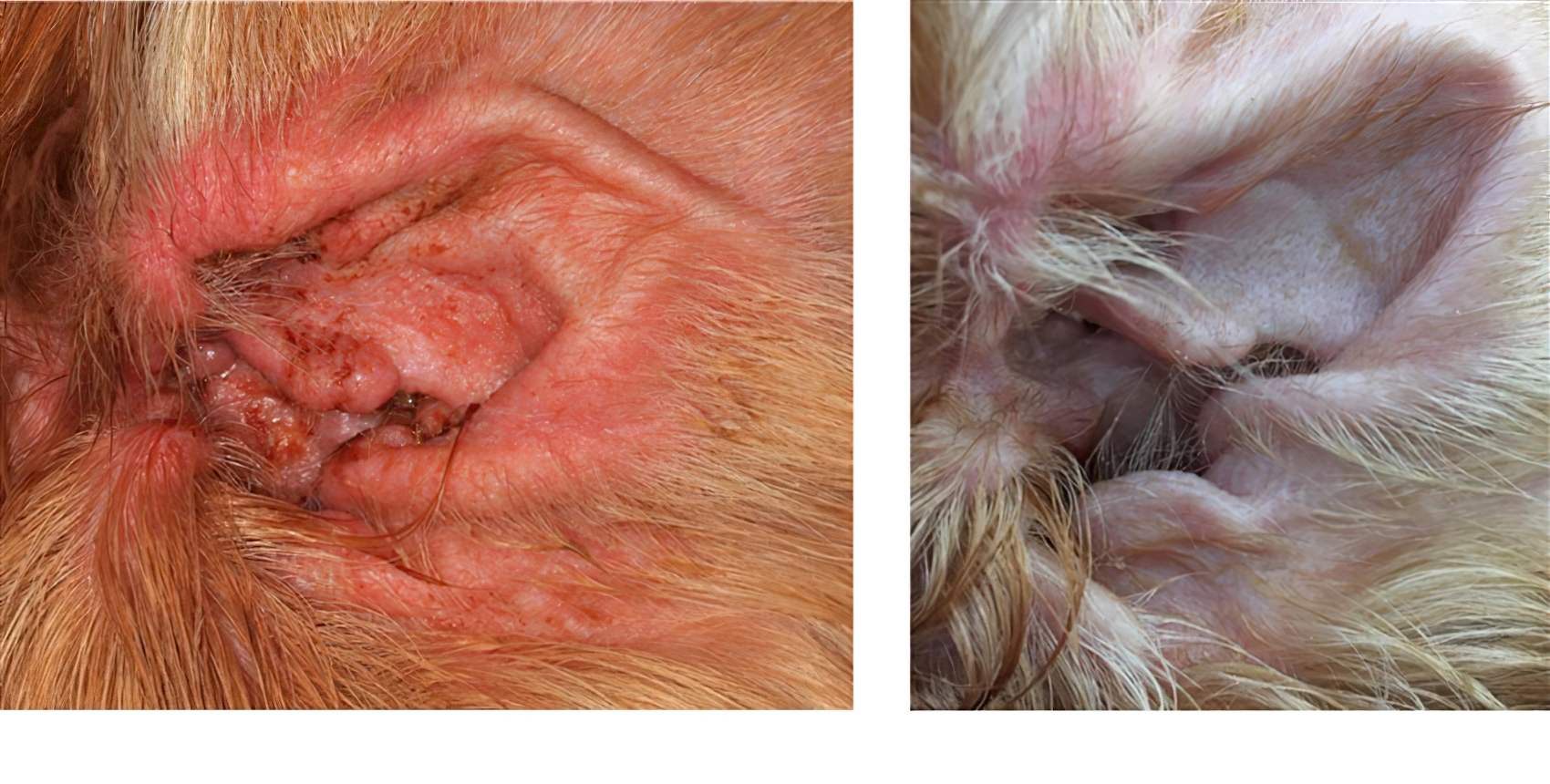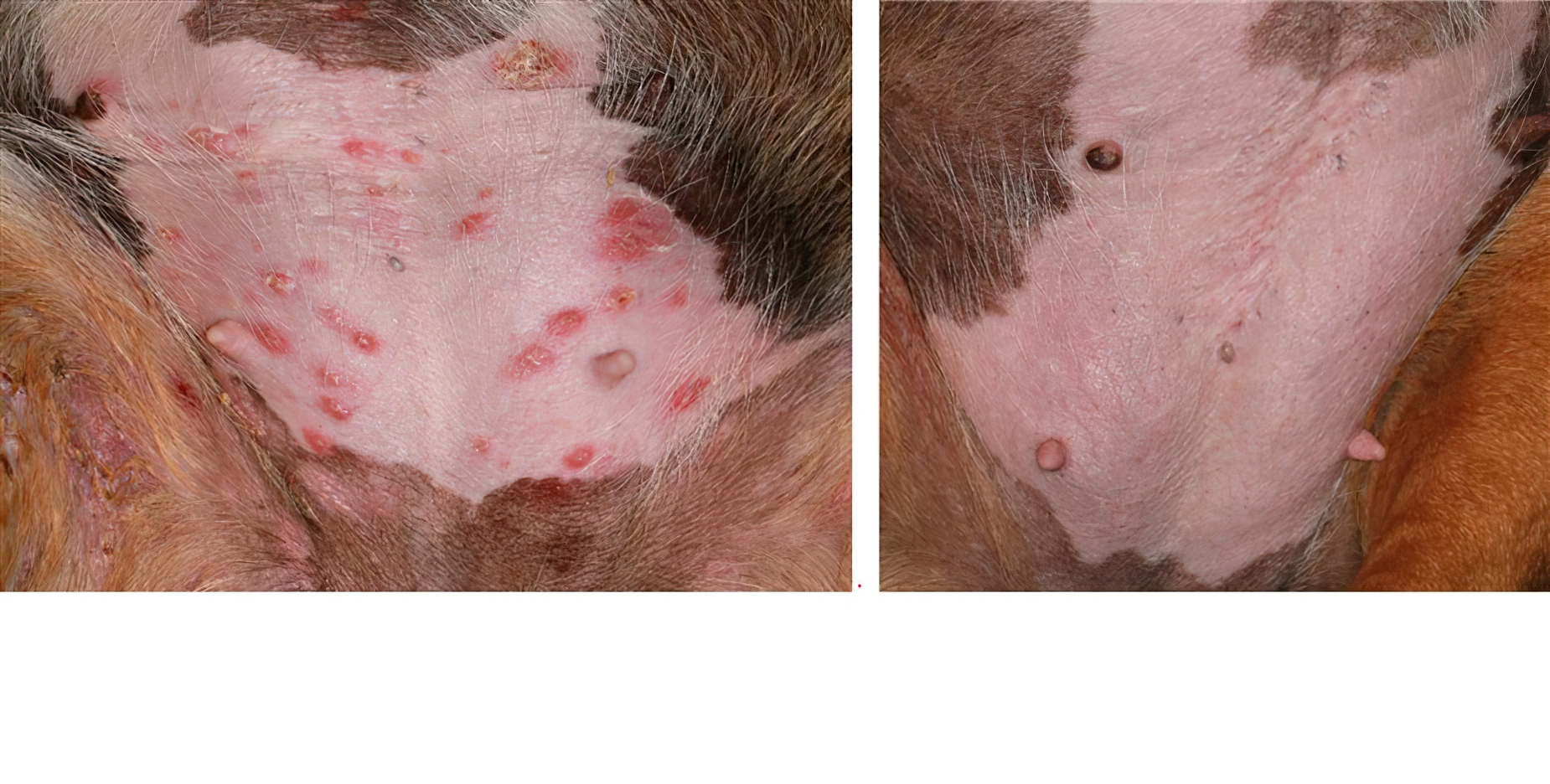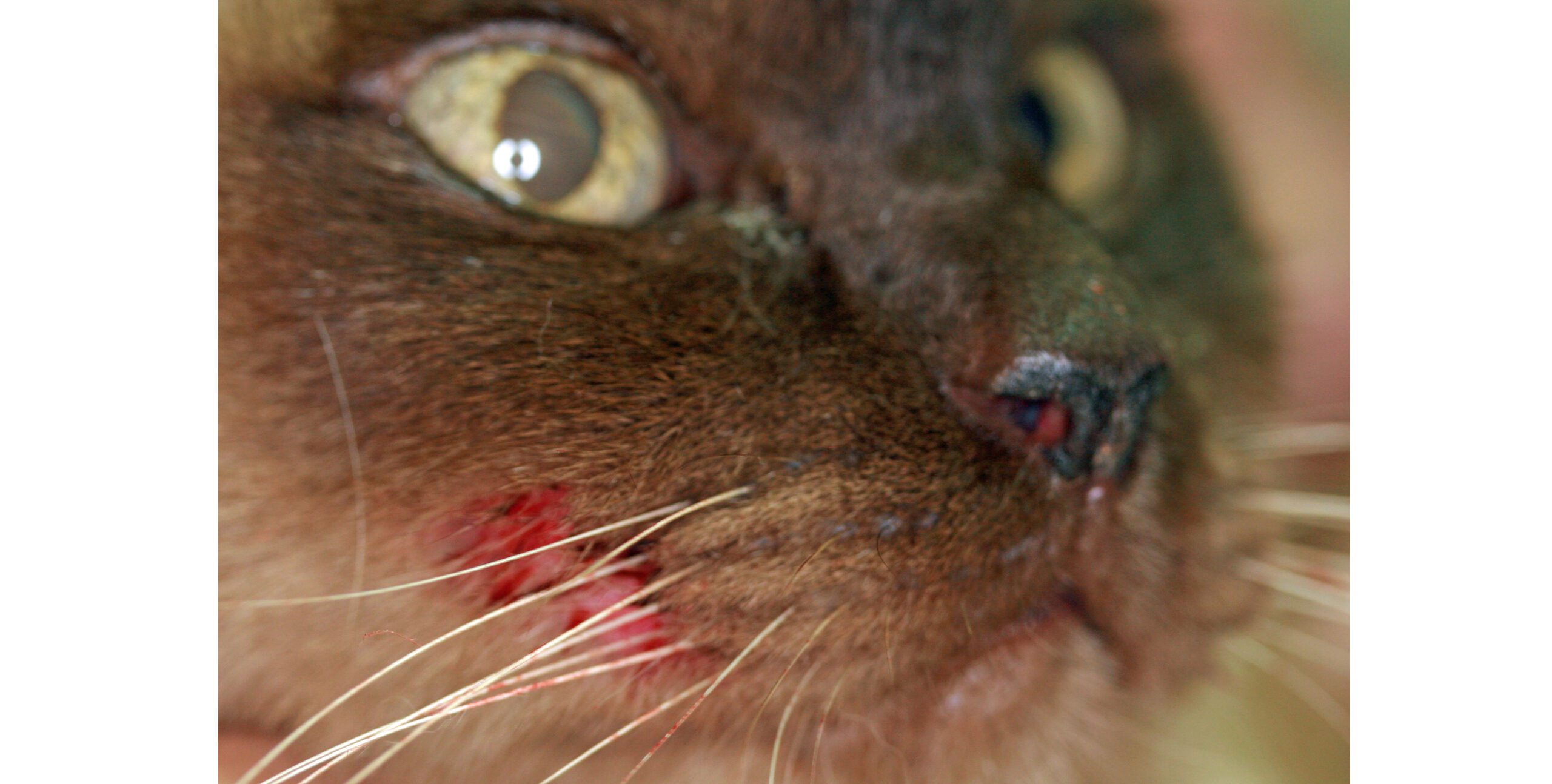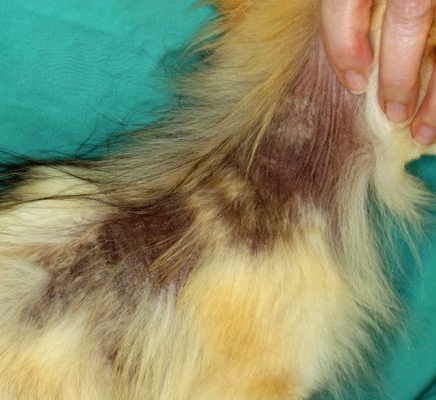Diet Trial Choices
Hydrolysed Protein – Veterinary Nutrition Company Diets
Reactions to food components are usually against large molecules like glycoproteins. It appears that enzymatic hydrolysis, similar to that used in the production of pure amino acids for pharmaceutical use, produces a stable protein source composed exclusively of free amino acids (and very low molecular weight oligopeptides). Protein hydrolysate diets became available to the veterinary profession in the nineties. I recommend using these products for exclusion diet trials, especially those made from proteins unlikely to be fed to our pets such as feathers and soya. Veterinary nutrition companies employ high levels of contaminant control (complete production line cleaning prior to making a batch of hydrolysed or single protein diet. These companies regularly test their diet batches with highly accurate protein detection methods to ensure their status as single protein source diets is fully reliable (polymerase chain reaction tests) – they are proven to be free of other protein contamination
Single Protein – Veterinary Nutrition Company Diets
Nowadays I seldom recommend a single protein source diet for an exclusion trial but these are often useful for longer term management when a dietary intolerance has been proven. The diets that I am prepared to recommend have these protein sources – Capelin, Catfish, Blue Whiting, Duck, Egg, Goat, Lamb, Pork, Quail, Rabbit, Salmon and Venison.
Commercial diets
Walk along any pet store diet aisle nowadays and you will notice how many manufacturers claim that a diet is hypoallergenic. A diet is only hypoallergenic to your animal if it has never been exposed to any of the proteins incorporated in it. No protein can be described as hypoallergenic for every dog or cat, unless it has never been available to any pet prior to its release. Even if this is true once it has been released then it no longer can be termed hypoallergenic as the pet population has been exposed and eventually individuals will become sensitised to it. This term can only be made for the hydrolysed diets as each individual animal will be exposed to multiple and varying dietary proteins throughout its life. So-called novel protein sources are now almost unheard of – several companies now market insect protein-based diets and as these are now readily available insect cease to be a ‘novel’ protein source. These diets are made with maggots, but interestingly the packaging will state that the protein source is ‘grubs’ or ‘larvae’ so as not to revolt the prospective purchaser!
Raw Diet
Feeding of raw meat-based diets to pets has become an increasingly popular trend amongst pet owners. Owners, who desire to provide the best for their pets, should seek veterinary opinion about this food option. A 2011 review paper has applied standards of evidence-based medicine to grade the available scientific literature that addresses the nutritional benefits or risks, infectious disease risks, and public health implications of raw, meat-based pet diets. They concluded that although there is a lack of large cohort studies to evaluate risk or benefit of raw meat diets fed to pets, there was sufficient evidence available that veterinarians should feel obligated to discuss the human health implications of a client’s decision to use a raw meat-based food for their pet (Schlesinger & Joffe, Can Vet Journal, 2011). It is proven that owners who feed their pets a raw diet have a higher risk of infections with Salmonella, Listeria, Campylobacter & E. Coli. Human individuals that will be more vulnerable to these potentially severe problems include young children, elderly people, and immuno-compromised individuals (chemotherapy, immune disease, etc.) as they are at a higher risk of infection and illness if exposed to bacteria. Similarly pets that are more prone to risks of infection include those with cancer, pets receiving chemotherapy or other immunosuppressive therapies, very old or very young pets, and those with immune diseases.
In 2018, the Veterinary Information Network (VIN) News Service described a concerning case series documenting Mycobacterium bovis (cattle TB) gastrointestinal infections in exclusively indoor cats all fed a commercial frozen raw diets: UK investigates unusual feline TB cases
Personally I suspect that, since the raw diet fad has gained support with owners in the UK, I am encountering many more cases of a potentially fatal condition known as haemorrhagic gastroenteritis during my Emergency shifts, but as yet there are no studies confirming this strong suspicion.
Here is a link to the World Small Animal Veterinary Association (WSAVA) Global Nutrition Committee statement on raw meat-based diets:
WSAVA Global Nutrition Committee Statement on Risks of Raw Meat-Based Diets
It is worth knowing that many worldwide animal care organisations that do not support the feeding of raw meat-based diets to pets including The American Association of Feline Practitioners (AAFP), The National Association of State Public Health Veterinarians (NASPHV), The American Animal Hospital Association (AAHA) & the Food & Drugs Authority (FDA).
The British Small Animal Veterinary Association (BSAVA) ‘recommends that all companion animals are fed a nutritionally balanced diet suitable to their nutritional needs, in accordance with the requirements of the Animal Welfare Acts and relevant welfare codes. Since disease can alter nutritional needs and the ability to absorb and utilize nutrients, nutritional assessments should also be undertaken on sick animals at regular intervals. The BSAVA strongly recommends that where home prepared diets are fed appropriate advice is given to ensure that these are nutritionally complete and meet the needs of the animal. Where raw food (especially that containing meat and meat products) is fed the BSAVA strongly recommends that hygiene measures are in place to minimize the risk of the transmission of communicable disease. Where there are children or immune compromised adults in the household medical advice should be sought, before considering whether to prepare, handle and store raw food’.
In February 2018, the Pets as Therapy charity released a policy statement which stated that: ‘An increasing number of NHS Trusts and education authorities now state in their Infection Prevention and Control Policies that they cannot accept visits from therapy dogs fed on raw meat. The full statement can be read via this link: PAT Policies – Raw meat based diets
Here is a short article from BSAVA’s Companion journal discussing this subject: 20170902 Raw vs Processed (Chandler, Companion Journal, BSAVA)
In September 2017, a scientific study poster entitled ‘Cooking and Processing reduce IgE sensitisation to Foods in Dogs’ was presented at the 29th European Dermatology Congress by Richard et al., from the Dermatology Department of the University of Zurich. The conclusion, based on over six thousand immunblots from twelve hundred dogs, was that feeding raw food might be more allergenic. The findings that food processing reduces IgE sensitisation opens development perspectives to further decrease food sensitising components in industrial petfoods.
Finally, a 2019 publication which may be of interest is ‘Raw diets for dogs and cats: a review, with particular reference to microbiological hazards (Davies et al., JSAP). Apart from the malnutrition (inexpert formulation and testing of diets) and infection affecting pets and/or household members. Surveys in Europe and North America have consistently found Salmonella species in a proportion of samples, typically of fresh‐frozen commercial diets. Another emerging issue concerns the risk of introducing antimicrobial‐resistant bacteria. Raw pet food commonly exceeds hygiene thresholds for counts of Enterobacteriaceae. These bacteria often encode resistance to critically important antibiotics, and raw‐fed pets create an elevated risk of shedding such resistant bacteria. This paper is ‘open access’ through this link on Wiley’s Online library: Raw Diet Risks (Davies et al., JSAP)




